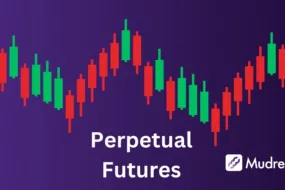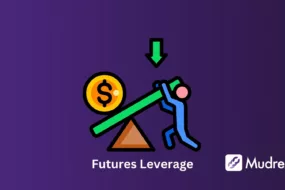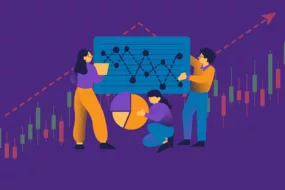
Crypto Futures vs Crypto Forward Contracts
Understanding the financial instruments known as futures and forward contracts is crucial for anyone involved in trading or risk management. These contracts play a vital role in the financial markets, allowing participants to hedge risks or speculate on future price movements.
In this article, we will delve into the seven key differences between futures and forward contracts, providing a comprehensive overview that highlights their distinct characteristics and uses.
Key Takeaways
- Definition, Characteristics of Future Contracts and Forward Contracts
- Key Differences
- Practical applications of both contracts
What are Futures Contracts?
Future contracts are standardized agreements to purchase or sell an item at a fixed price at a given future date. Because these contracts are exchanged on exchanges, their uniformity and liquidity are guaranteed.
The origins of futures contracts can be traced back to the 17th century in Japan, where rice futures were traded. Modern futures markets began in the mid-19th century with the United States’ agricultural commodities like corn and wheat.
Key Characteristics
- Standardization: Futures contracts are highly standardized in terms of contract size, expiration dates, and settlement procedures.
- Trading Venue: They are traded on centralized exchanges like the Chicago Mercantile Exchange (CME), ensuring transparency and liquidity.
- Daily Settlement: Futures are marked to market daily, meaning gains and losses are settled at the end of each trading day.
- Margin Requirements: Traders must maintain a margin account to cover potential losses.
- Regulation: Futures markets are heavily regulated by entities such as the Commodity Futures Trading Commission (CFTC) in the United States.
What are Forward Contracts?
Customized agreements between two parties to purchase or sell an asset at a given price at a later time are known as forward contracts. Unlike futures, forward contracts are traded over-the-counter (OTC), meaning they are not standardized or traded on an exchange.
Forward contracts have a long history dating back to ancient civilizations. They were used in agricultural markets to lock in prices for crops and livestock.
Key Characteristics
- Customization: Forward contracts can be tailored to the specific needs of the parties involved, including the contract size, expiration date, and settlement terms.
- Trading Venue: They are traded in the OTC market, which allows for flexibility but also introduces counterparty risk.
- Settlement at Maturity: Forwards are settled at the end of the contract term rather than daily.
- No Margin Requirements: Unlike futures, forward contracts typically do not require margin accounts.
- Limited Regulation: The OTC market for forwards is less regulated than the futures market.
Key Differences between Futures and Forward Contracts
Understanding the differences between futures and forward contracts is essential for choosing the right instrument for your trading or hedging strategy. Here are the seven key differences:
| Aspect | Futures Contracts | Forward Contracts |
| Standardization | Highly standardized terms and conditions | Customized terms and conditions |
| Trading Venue | Traded on organized exchanges | Traded over-the-counter (OTC) |
| Counterparty Risk | Lower counterparty risk due to exchange clearinghouses | Higher counterparty risk due to direct parties’ involvement |
| Margin Requirements | Requires initial and maintenance margins | Typically no margin requirements |
| Settlement | Marked-to-market daily with potential daily settlements | Settled at contract maturity |
| Liquidity | Generally more liquid due to standardized contracts | Generally less liquid due to customization |
| Pricing and Valuation | Futures reflect current market conditions and interest rates | Forward contract pricing is based on the spot price plus carrying costs |
Detailed Comparison of Forward and Future Contracts
1. Customization vs. Standardization
Future Contracts: Standardized in terms of contract size, expiration dates, and delivery terms. This standardization facilitates easier trading and ensures that all participants adhere to the same contract specifications, enhancing market efficiency.
Forward Contracts: Highly customizable, allowing parties to specify terms that suit their needs. These contracts offer complete flexibility and can be tailored to specific requirements such as contract size, underlying asset, and settlement date.
2. Trading Venue
Future Contracts: Traded on public exchanges, ensuring transparency, liquidity, and ease of access. The exchange-traded nature of futures allows for a more regulated and standardized trading environment.
Forward Contracts: Traded privately over-the-counter (OTC). The private nature of these contracts allows for greater customization but also limits their liquidity and market accessibility.
3. Counterparty Risk
Forward Contracts Have higher counterparty risk due to the lack of a central clearinghouse. This risk arises because there is no intermediary to guarantee the contract’s performance, making each party’s reliability crucial.
Future Contracts: Mitigate counterparty risk through the use of a central clearinghouse, which guarantees the performance of the contract. This significantly reduces the risk of default and enhances market stability.
4. Margin Requirements
Future Contracts: Require participants to deposit an initial margin and maintain a minimum margin level to ensure contract performance. This requirement helps mitigate risk by ensuring participants have a financial stake in the contract.
Forward Contracts: Typically do not require margins, meaning there is no need for an initial deposit or maintenance of a minimum margin level. This can lead to higher risk exposure.
5. Settlement
Forward Contracts: These settle at the end of the contract term, where the asset is delivered and payment is made. This settlement process means that the value of the contract is only realized at maturity, which can lead to greater uncertainty and risk.
Future Contracts: Settled daily through a process called mark-to-market. This means the contract’s value is adjusted daily to reflect its current market value, reducing risk and providing more accurate valuations.
6. Liquidity and Market Accessibility
Forward Contracts: Offer lower liquidity due to their customized nature and OTC trading. The need for standardization and public trading venues limits the ability to buy and sell these contracts easily.
Future Contracts: Provide higher liquidity and easier market access due to their standardized terms and exchange-traded nature. The public trading venues and standardized contracts attract a broader range of participants, increasing market activity and liquidity.
7. Pricing and Valuation
Future Contracts: Reflect current market conditions, interest rates, and time to maturity. The standardized nature of futures contracts and the daily mark-to-market process provide more transparent and consistent pricing.
Forward Contracts: Pricing is based on the spot price plus the cost of carry, which includes storage costs, interest rates, and other expenses. This can make pricing more complex and variable.
Practical Applications
Now that you have a clear understanding of the differences between futures and forward contracts, let’s also take a look at how they’re used.
Use in Hedging
Future Contracts: Commonly used by speculators and institutional investors to hedge against price movements in commodities, currencies, or interest rates. The standardized and liquid nature of futures makes them a popular choice for hedging broad market exposures.
Forward Contracts: Ideal for businesses looking to hedge specific cash flows or exposures. For instance, an exporter might use a forward contract to lock in the exchange rate for a future transaction, protecting against adverse currency movements.
Speculation and Arbitrage
Future Contracts: Widely used by speculators aiming to profit from price volatility. Standardized terms and exchange trading create opportunities for arbitrage, where traders can exploit price discrepancies across different exchanges or markets.
Forward Contracts: Less commonly used for speculation due to their illiquidity and counterparty risk. Forward contracts’ private and customized nature makes them less attractive for speculative activities.
Conclusion
By understanding the key differences between futures and forward contracts, traders and investors can make more informed decisions and effectively manage their risk. Whether used for hedging, speculation, or customized solutions, these financial instruments play a crucial role in the global markets.
Here’s where Mudrex can help. Mudrex gives you an easy-to-use app that can manage trades and navigate risks. Whether you are a seasoned trader or just starting, utilizing platforms like Mudrex can significantly enhance your trading experience and overall success within the crypto market.
Download Mudrex and Start Your Crypto Trading Journey Now
FAQs
What sets forward contracts apart from futures contracts?
The main differences between futures and forward contracts include standardization, trading venues, contract sizes and terms, settlement processes, counterparty risk, use cases, and pricing and valuation methods. Futures are standardized and traded on exchanges with daily settlement, while forwards are customized and traded over the counter with settlement at maturity.
How are futures contracts standardized?
Futures contracts are standardized in terms of contract size, expiration dates, and settlement procedures. This standardization ensures liquidity, transparency, and ease of trading on centralized exchanges.
Why is counterparty risk higher in forward contracts compared to futures?
Counterparty risk is higher in forward contracts because they are traded over the counter without a central clearinghouse to guarantee performance. In contrast, futures contracts are cleared through a central clearinghouse, which mitigates counterparty risk by ensuring contract performance.
What are some common uses of futures and forward contracts?
Futures contracts are commonly used for hedging against price fluctuations and for speculative purposes. They are used in markets for commodities, interest rates, and currencies. Forward contracts are ideal for customized hedging solutions, especially when specific contract terms are required, and are often used by multinational corporations to hedge currency risk.
How are futures contracts priced and valued?
Futures contracts are priced and valued using the mark-to-market mechanism, where gains and losses are realized and settled daily. This method ensures transparency and regular settlement, reflecting the current market value of the contract.





